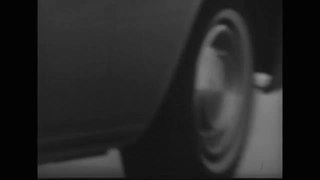
Echolocation, also called bio sonar, is a biological active sonar used by several animal groups, both in the air and underwater. Echolocating animals emit calls and listen to the echoes of those calls that return from various objects near them. They use these echoes to locate and identify the objects. Echolocation is used for navigation, foraging, and hunting prey.

Agnosia is a neurological disorder characterized by an inability to process sensory information. Often there is a loss of ability to recognize objects, persons, sounds, shapes, or smells while the specific sense is not defective nor is there any significant memory loss. It is usually associated with brain injury or neurological illness, particularly after damage to the occipitotemporal border, which is part of the ventral stream. Agnosia only affects a single modality, such as vision or hearing. More recently, a top-down interruption is considered to cause the disturbance of handling perceptual information.
An audio game is an electronic game played on a device such as a personal computer. It is similar to a video game save that there is audible and tactile feedback but not visual.
Human echolocation is the ability of humans to detect objects in their environment by sensing echoes from those objects, by actively creating sounds: for example, by tapping their canes, lightly stomping their foot, snapping their fingers, or making clicking noises with their mouths. People trained to orient by echolocation can interpret the sound waves reflected by nearby objects, accurately identifying their location and size.

In cognitive psychology and neuroscience, spatial memory is a form of memory responsible for the recording and recovery of information needed to plan a course to a location and to recall the location of an object or the occurrence of an event. Spatial memory is necessary for orientation in space. Spatial memory can also be divided into egocentric and allocentric spatial memory. A person's spatial memory is required to navigate in a familiar city. A rat's spatial memory is needed to learn the location of food at the end of a maze. In both humans and animals, spatial memories are summarized as a cognitive map.
Sound localization is a listener's ability to identify the location or origin of a detected sound in direction and distance.

A retirement home – sometimes called an old people's home,old folks' home, or old age home, although old people's home can also refer to a nursing home – is a multi-residence housing facility intended for the elderly. Typically, each person or couple in the home has an apartment-style room or suite of rooms with an en-suite bathroom. Additional facilities are provided within the building. This can include facilities for meals, gatherings, recreation activities, and some form of health or hospital care. A place in a retirement home can be paid for on a rental basis, like an apartment, or can be bought in perpetuity on the same basis as a condominium.

Wayfinding encompasses all of the ways in which people orient themselves in physical space and navigate from place to place. Wayfinding software is a self-service computer program that helps users to find a location, usually used indoors and installed on interactive kiosks or smartphones.
Sensory substitution is a change of the characteristics of one sensory modality into stimuli of another sensory modality.

In ecology, crypsis is the ability of an animal or a plant to avoid observation or detection by other animals. It may be a predation strategy or an antipredator adaptation. Methods include camouflage, nocturnality, subterranean lifestyle and mimicry. Crypsis can involve visual, olfactory or auditory concealment. When it is visual, the term cryptic coloration, effectively a synonym for animal camouflage, is sometimes used, but many different methods of camouflage are employed in nature.

Since the Global Positioning System (GPS) was introduced in the late 1980s there have been many attempts to integrate it into a navigation-assistance system for blind and visually impaired people.

Acoustic location is a method of determining the position of an object or sound source by using sound waves. Location can take place in gases, liquids, and in solids.
In perceptual psychology, a sensory cue is a statistic or signal that can be extracted from the sensory input by a perceiver, that indicates the state of some property of the world that the perceiver is interested in perceiving.
Active sensory systems are sensory receptors that are activated by probing the environment with self-generated energy. Examples include echolocation of bats and dolphins and insect antennae. Using self-generated energy allows more control over signal intensity, direction, timing and spectral characteristics. By contrast, passive sensory systems involve activation by ambient energy. For example, human vision relies on using light from the environment.

Orientation and Mobility, or O&M, is a profession which focuses on instructing individuals who are blind or visually impaired with safe and effective travel through their environment. Individual O&M specialists can work for schools, government agencies or work as private contractors. The Academy for Certification of Vision Rehabilitation and Education Professionals (ACVREP) offers certification for vision rehabilitation professionals in the United States.
In computing, 3D interaction is a form of human-machine interaction where users are able to move and perform interaction in 3D space. Both human and machine process information where the physical position of elements in the 3D space is relevant.

In psychology, visual capture is the dominance of vision over other sense modalities in creating a percept. In this process, the visual senses influence the other parts of the somatosensory system, to result in a perceived environment that is not congruent with the actual stimuli. Through this phenomenon, the visual system is able to disregard what other information a different sensory system is conveying, and provide a logical explanation for whatever output the environment provides. Visual capture allows one to interpret the location of sound as well as the sensation of touch without actually relying on those stimuli but rather creating an output that allows the individual to perceive a coherent environment.
In cognitive psychology, spatial cognition is the acquisition, organization, utilization, and revision of knowledge about spatial environments. It is most about how animals, including humans, behave within space and the knowledge they built around it, rather than space itself. These capabilities enable individuals to manage basic and high-level cognitive tasks in everyday life. Numerous disciplines work together to understand spatial cognition in different species, especially in humans. Thereby, spatial cognition studies also have helped to link cognitive psychology and neuroscience. Scientists in both fields work together to figure out what role spatial cognition plays in the brain as well as to determine the surrounding neurobiological infrastructure.
Auditory feedback (AF) is an aid used by humans to control speech production and singing by helping the individual verify whether the current production of speech or singing is in accordance with his acoustic-auditory intention. This process is possible through what is known as the auditory feedback loop, a three-part cycle that allows individuals to first speak, then listen to what they have said, and lastly, correct it when necessary. From the viewpoint of movement sciences and neurosciences, the acoustic-auditory speech signal can be interpreted as the result of movements of speech articulators. Auditory feedback can hence be inferred as a feedback mechanism controlling skilled actions in the same way that visual feedback controls limb movements.

Wayfinding has been used in the context of architecture to refer to the user experience of orientation and navigating within the built environment.











